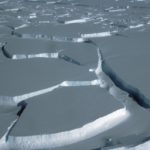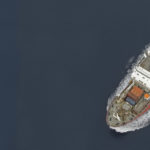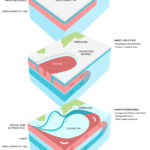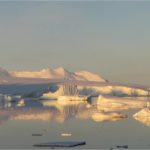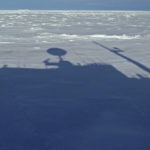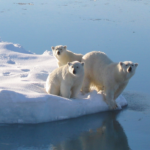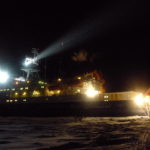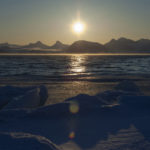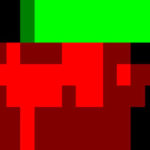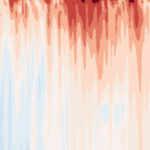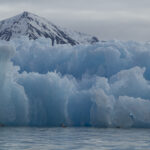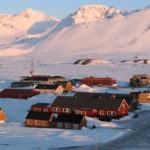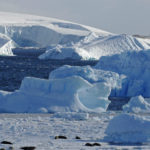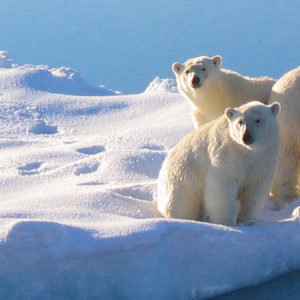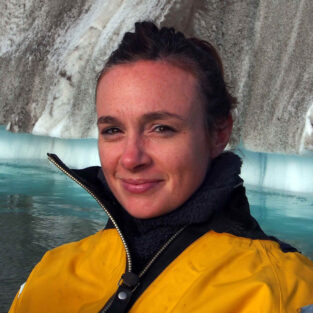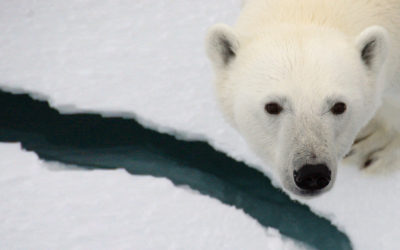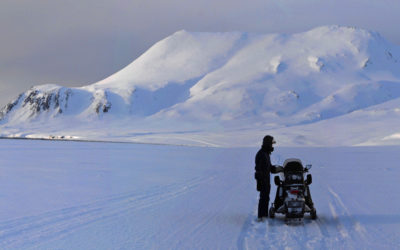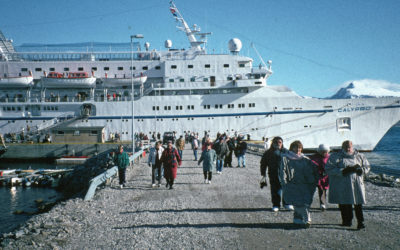BAS-Arctic Working Group
Working Group purpose
The Arctic Working Group is a group of more than 60 BAS scientists and operations staff who are currently working in the Arctic or have aspirations to work there. The AWG was started in 2018 to bring together researchers in different fields to share their experiences of Arctic research, to enable new collaborations, and to maximise the potential output of this group by coordinating efforts and knowledge regarding Arctic projects, funding calls and logistics.

Terms of Reference
Content coming soon
Our priorities
Content coming soon
Map of Arctic Working Group projects
Arctic marine geophysics
This research focuses on investigating the glacial histories of Arctic ice sheets and ice caps using the marine geological record preserved on continental margins. By reconstructing past ice sheets, their …SDOO
Abrupt warming episodes punctuate Greenland ice core records throughout the last glacial period. These events were first identified in two Greenland stable water isotope records (Dansgaard et al., 1993), and …Climate and Ice during the Last Interglacial
During the Last Interglacial (129-116 thousand years ago, ka) CO2 and global temperature were both higher than they were before human industrialisation. By examining Last Interglacial climate, we thus gain …TEA-COSI
TEA_COSI assesses Arctic Sea-ice which has an important impact on currents and ocean circulations around the globeUKESM-BAS
Reliable projections of the Earth’s climate are at the heart of scientific support for international efforts to address global change. There is increasing recognition that reliable projections require that physical …ESA IAP ArcticSat project
Situational awareness in the ArcticICE-ARC
physicists, chemists, biologists, economists, and sociologists from 21 institutes in 11 countries across Europe assess the rapid retreat and collapse of Arctic sea-ice coverSIOS
Svalbard Integrated Earth Observing System (SIOS) is an international infrastructure project. There are 26 partners from Europe and Asia involved. The essential objective is to establish better coordinated services for …SEANA
Global shipping is undergoing significant changes. In January 2020 the maximum sulphur emission by ships in international waters will reduce from 3.5% to 0.5% by mass, as a result of …Data As Art
DATA AS ART is an ongoing science & art project in development at NERC’s British Antarctic Survey (BAS). It visualises science data (in its widest definition), to create stunning and …EISCAT Science Support
The UK EISCAT support group (UKESG) is a collaboration between the British Antarctic Survey and the Rutherford Appleton Laboratory, funded via the National Centre for Atmospheric Science (NCAS) EISCAT, the …Iceland Greenland seas Project
PI: Ian Renfrew (University of East Anglia) CO-I’s: Tom Bracegirdle, Tom Lachlan-Cope, Alexandra Weiss PDRA’s: Andrew Elvidge (University of East Anglia), James Pope NERC Grant: NE/N009924/1 Project Partners: Robert Pickart …ACSIS
Major changes are occurring across the North Atlantic climate system: in the ocean and atmosphere temperatures and circulation, in sea ice thickness and extent, and in key atmospheric constituents such …Increasing ship traffic in Inuit Nunangat
17 August, 2023
Researchers from British Antarctic Survey are heading to the Canadian Arctic this week to learn more about the impacts of increasing ship traffic in Inuit Nunangat. In recent years, climate …
Poet Laureate visits UK Arctic Research Station
14 July, 2023
The UK Poet Laureate Simon Armitage CBE has travelled to the UK Arctic Research Station, where he will create new works inspired by the visit. While hosted at the UK …
Britain’s Arctic Research Station celebrates 30 years of science and monitoring climate change
28 September, 2021
The Arctic Station in Ny-Ålesund, Svalbard in Norway, the UK’s permanent Arctic research facility, celebrates its 30 years anniversary this week (Tuesday 28 September) as it continues to undertake critical …
BAS celebrates International Day of Women and Girls in Science
11 February, 2022 by Melody Clark
Today, 11 February, is International Day of Women and Girls in Science, a global initiative led by UNESCO and UN-Women. To celebrate, we have asked some of our female staff …
Glacier biogeochemical cycling and downstream impacts
11 December, 2025 by Kate Hendry
Far from being frozen and sterile environments, glaciers are biogeochemical reactors and regulators. In this Review, we discuss the hydrology and biogeochemistry of glacierized environments and their impact on downstream…Read more on Glacier biogeochemical cycling and downstream impacts
Variability and Trends of the Amundsen Sea Low since the Early Twentieth Century from Seasonal-Station-Based Reconstructions
8 December, 2025 by Thomas Bracegirdle
The Amundsen Sea is dominated by a quasi-stationary low-pressure region, the Amundsen Sea Low (ASL). ASL variability impacts on regional weather and the basal melting of ice shelves, an important…Metacommunity structural changes of Antarctic benthic invertebrates over the late Maastrichtian
8 December, 2025 by Huw Griffiths, Rowan Whittle, Tasnuva Khan
Seymour (Marambio) Island, Antarctica has one of the most expanded onshore Cretaceous–Paleogene sedimentary successions in the world. The deposition of the López de Bertodano Formation (~70–65.6 Ma) covered a time of…Clinging onto Arctic Benthos: The Biogeography of Amathillopsis spinigera Heller, 1875 (Crustacea: Amphipoda), including it’s redescription
1 December, 2025 by Katrin Linse
Amathillopsis spinigera Heller, 1875, is an enigmatic peracarid crustacean species found in the Arctic Ocean. During the summer of 2024, it was recorded in the HAUSGARTEN observatory for the first…Major-Minor-Trace Element Analyses and Oceanographic Modeling Confirms Circumpolar Transport of the 1962 Protector Shoal Pumice Raft
1 December, 2025 by Alistair Monteath, Emma Young, Stephen Roberts, Tom Jordan, Teal Riley
Pumice rafts derived from submarine eruptions can remain afloat for months or even years, traveling thousands of kilometers on ocean currents. These natural phenomena disperse marine organisms and provide important…Eukaryotic diversity associated with the phycosphere of the seaweed Ulvaria obscura (Kützing) Gayral (Chlorophyta, Ulvophyceae) in the Svalbard Archipelago, Arctic region assessed using DNA metabarcoding
28 November, 2025 by Peter Convey
Microorganisms often occur in association with macroalgae, with the term “phycosphere” referring to the seaweed surface where they may be present. Phycosphere represents a poorly explored niche of marine diversity,…Implications of the recent loss of Antarctic sea ice for phytoplankton and summer feeding habitats of salps and krill
27 November, 2025 by Caroline Holmes
Antarctic sea ice showed a profound, step-wise reduction around 2016-2017, but the scarcity of modern time series means that we know very little about how Southern Ocean biota have responded.…Antarctic and Arctic Seaweeds: Reassessing Diversity, Ecophysiological Adaptations, Connections and Changes in Biogeographical Distribution as a Survival Strategy Facing Meteorological and Oceanographic Changes
23 November, 2025 by Peter Convey
Diversity, distribution and biogeographical aspects of polar macroalgae must be reassessed as they face contemporary environmental changes. Macroalgae are the basis of the marine food web, efficient carbon sinks, biogenic…Solar Wind and Geomagnetic Conditions That Lead to the Largest Relativistic Electron Fluxes in GPS Orbit
21 November, 2025 by Kaine Bunting, Mark Clilverd, Nigel Meredith, Thomas Daggitt
Relativistic electrons are an important space weather hazard, being a major source of radiation damage to satellites and posing a risk to humans in space. We use approximately 20 years…Sensitivity of near-surface marine winds and wind stress in coastal Antarctica to regional atmospheric model configuration
16 November, 2025 by Hua Lu, John King, Thomas Caton Harrison, Thomas Bracegirdle
Near-surface marine winds in coastal Antarctica have global importance, as they affect ocean circulation and sea-ice variability. We test the sensitivities of simulated near-surface winds and wind stress in coastal…Prevalence and consequences of microplastic ingestion in the world’s southernmost insect, Belgica antarctica
15 November, 2025 by Peter Convey
Plastic pollution has reached the remote terrestrial ecosystems of Antarctica, but the extent to which microplastics are affecting native terrestrial invertebrates has not been assessed. Using Antarctica's only endemic insect,…Editorial: Biodiversity of Antarctic and Subantarctic ecosystems
12 November, 2025 by Peter Convey
The Intergovernmental Science-Policy Platform on Biodiversity and Ecosystem Services (IPBES) adopted a work program (2019–2030) that included, under its first objective, the interlinkages between biodiversity and climate change (IPBES, 2019).…Read more on Editorial: Biodiversity of Antarctic and Subantarctic ecosystems
A Pilot Investigation of the Hidden Communities Associated With Dryas octopetala L. (Rosaceae) in Svalbard Using DNA Metabarcoding
5 November, 2025 by Peter Convey
Dryas octopetala is one of the most important botanical components of Arctic tundra. In parts of the Norwegian High Arctic Archipelago of Svalbard it can face strong grazing pressure, in…Implementation of water tracers in the Met Office Unified Model
3 November, 2025 by Alison McLaren, Louise Sime, Qinggang Gao
There is an increasing need to understand how water is cycled and transported within the atmosphere, to aid water management. Here, atmospheric water tracers are added to the Met Office…Read more on Implementation of water tracers in the Met Office Unified Model
Evolving to invade: Using geometric morphometrics to assess wing shape variation in the Antarctic non-native fly Trichocera maculipennis
1 November, 2025 by Peter Convey
Globalization has increased human movement, transforming ecosystems and introducing non-native species that threaten biodiversity, particularly in Antarctica. Due to its harsh climatic conditions, Antarctica has largely remained protected from biological…Extreme Antarctic Sea Ice Loss Facilitated by Negative Shift of Southern Annular Mode
28 October, 2025 by Caroline Holmes, Thomas Bracegirdle
Antarctic sea ice area exhibited an abrupt decline in 2015–2016, transitioning from a near record maximum state to a then-record minimum state. The underlying drivers are still being studied, raising…Read more on Extreme Antarctic Sea Ice Loss Facilitated by Negative Shift of Southern Annular Mode
Benthopelagic Deep-Sea Food Webs Along a Latitudinal Gradient in the Scotia Sea (Southern Ocean)
28 October, 2025 by Gabriele Stowasser, Jose Marques Queiros, Jose Dos Santos Abreu, Martin Collins, Mark Belchier, Philip Hollyman
Understanding food-web structure is crucial to determine the functioning of ecosystems and sustainably manage resources. The Scotia Sea is an important area for Antarctic krill and toothfish fisheries, and one…The OCEAN ICE mooring compilation: a standardised, pan-Antarctic database of ocean hydrography and current time series [Data description paper]
28 October, 2025 by Christopher Auckland, Povl Abrahamsen, Keith Nicholls, Michael Meredith, Peter Davis, Pierre Dutrieux, Shenjie Zhou
Continuous moored time series of temperature, salinity, pressure and current speed and direction are of great importance for understanding the continental shelf and under-ice-shelf dynamics and thermodynamics that govern water…Seasonal analysis of Southern Ocean copepod ecology using a moored sediment trap
24 October, 2025 by Clara Manno, Florence Atherden, Geraint Tarling, Peter Ward
The Southern Ocean is a globally significant site of carbon sequestration with the copepod community exerting a strong influence on the carbon flux. Currently, a holistic understanding of Southern Ocean…Read more on Seasonal analysis of Southern Ocean copepod ecology using a moored sediment trap
